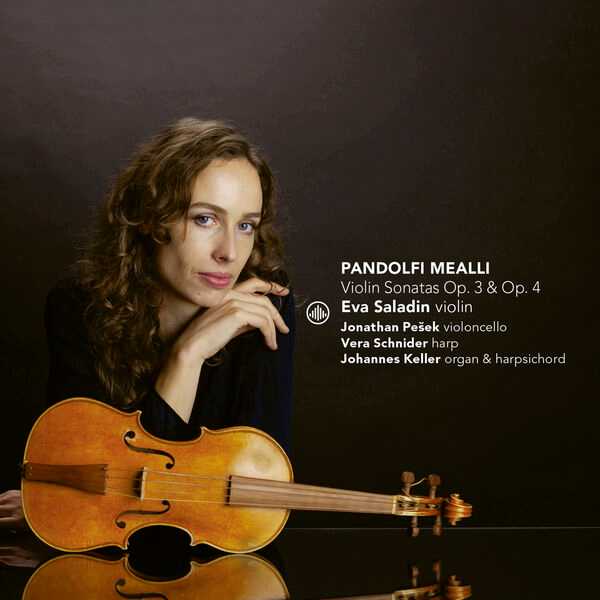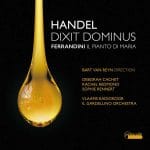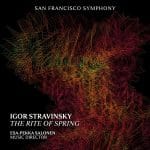

Composer: Giovanni Antonio Pandolfi Mealli
Performer: Eva Saladin
Format: FLAC (tracks)
Label: Challenge Classics
Catalogue: CC72948
Release: 2023
Size: 1.58 GB
Recovery: +3%
Scan: cover
6 Violin Sonatas, Op. 3
01. II. Sonata in A Minor “La Cesta”
02. III. Sonata in D Major “La Melana”
03. V. Sonata in E Minor “La Clemente”
6 Violin Sonatas, Op. 4
04. V. La Stella
05. III. La Monella Romanesca
6 Violin Sonatas, Op. 3
06. VI. Sonata in C Major “La Sabbatina”
6 Violin Sonatas, Op. 4
07. II. La Viviana
08. IV. La Biancuccia
6 Violin Sonatas, Op. 3
09. IV. Sonata in D Major “La Castella”
6 Violin Sonatas, Op. 4
10. I. La Bernabea
6 Violin Sonatas, Op. 3
11. I. Sonata in A Minor “La Stella”
6 Violin Sonatas, Op. 4
12. VI. La Vinciolina
For her debut release on the Challenge Classics label, Eva Saladin has chosen the scantly known sonatas by Pandolfi Mealli, an apparently marginal figure in the richest violin landscape of the 17th Century. Born in 1624, Giovanni Antonio Pandolfi Mealli was brought up partly in Venice and ended up in Innsbruck as a member of the Court Band. His name crops up later as a violinist in churches and at court in Messina and finally in Madrid, where it is likely that he died in 1687. There were two important stylistic periods for violin literature in the 17th century. In the early decades, a corpus of instrumental music appeared in northern Italy, with the first solo music explicitly for violin being written by composers such as Castello, Fontana and – most of all – Marini. Towards the tail-end of the century, we see the flowering of a refined culture of instrumental music in Austria, dominated by virtuosi such as Biber, Walther and Schmelzer. Pandolfi Mealli was caught in the middle, not being a follower of either school, and may have been somewhat lost from view among all these star performers. The twelve sonatas included in this album were published in Innsbruck in 1660 as two volumes, opus numbers 3 and 4, and are generally considered to be a united pairing. At first sight, the sonatas offer little in the way of variety. Some older literature even voices disdain at these works because of their lack of individualist, virtuoso or violinistic elements. Closer inspection, however, reveals a good number of interesting features in the collection: each sonata seems to have its own pronounced and unique character, varying from the obsessively chromatic to the heavenly naive. We can see subtle differences between ostensibly similar movements and the music is full of unexpected twists and turns. Stylistically, some of the sonatas clearly refer to early 17th century Venetian examples. Others introduce elements that would play an important part in later Austrian repertoire for violin. Many of the sonatas are surprisingly vocal, some sort of reference to contemporary song culture. These vocal sections invite the violin to decorate the melody. It is also hard to determine what instrumentation would have been used as the continuo for this repertoire. My own choice, based on the colourful combination of harp, organ and cello, is based in part on contemporary sources but also on my own curiosity about the tonal possibilities of this ensemble.



